How to Identify an Eastern Phoebe
Updated: Jul. 09, 2024
Learn what an eastern phoebe looks like and what its song sounds like. Find out what these birds eat and where to find them.
On This Page
Eastern Phoebe Identification
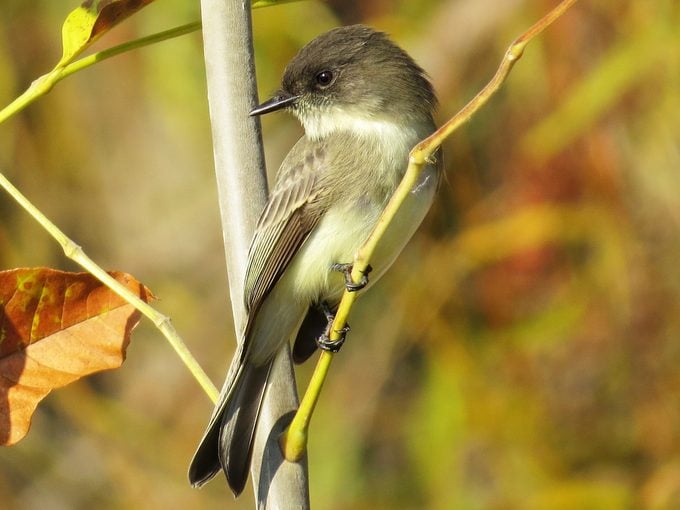
- Scientific Name: Sayornis phoebe
- Family: Flycatcher
- Length: 7 inches
- Wingspan: 10-1/2 inches
- Distinctive Markings: White throat, long dark tail and a dark head
The adult eastern phoebe is a small brownish gray bird with a white throat and rather plain wings. The bird’s large head is darker gray than the rest of the body. Another clue to help with ID: its habit of gently wagging its tail down and then up.
In the western states, look for two related birds: the black phoebe and the Say’s phoebe.
Meet more members of the flycatcher bird family.
Juvenile Eastern Phoebe
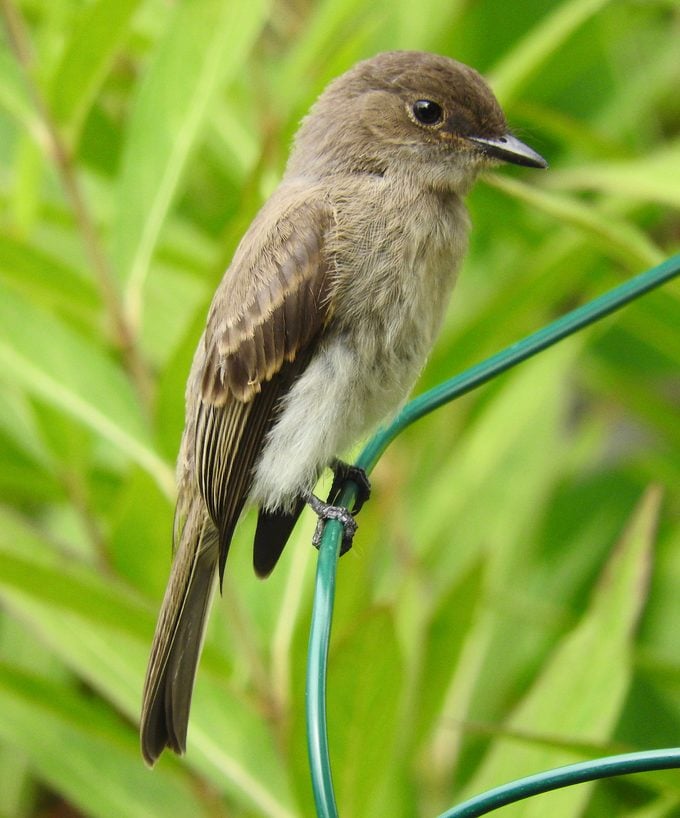
“We spotted this bird (above) in our backyard. What is it?” asks Birds & Blooms reader Julia Worth of Weymouth, Massachusetts.
Birding experts Kenn and Kimberly Kaufman say, “Some birds that show up in summer can be genuinely confusing because they are very young, having just learned to fly, and look noticeably different from adults. This one is a good example: It’s a young eastern phoebe. It probably left the nest and became independent from its parents just a few days before you saw it.
This youngster is a dingy brown on the throat and chest and has pale cinnamon-buff wing bars. By early fall, with some of these feathers replaced, it will look more like its parents.”
Nest and Eggs

An eastern phoebe nest is made of mud and moss, and lined with grasses, hair and feathers. You might see it under a bridge, deck or in a cave entrance. The nest holds two to six plain white eggs.

Kenn and Kimberly say, “Eastern phoebes build open nests that are easy to find, so they are frequent targets for brown-headed cowbirds. In some parts of their range, as many as one in four phoebe nests contains cowbird eggs. Cowbirds are brood parasites and never raise their own young. Instead, they lay their eggs in the nests of other songbirds, leaving the unwitting foster parents to hatch the eggs and feed the young.”
The First Banded Bird
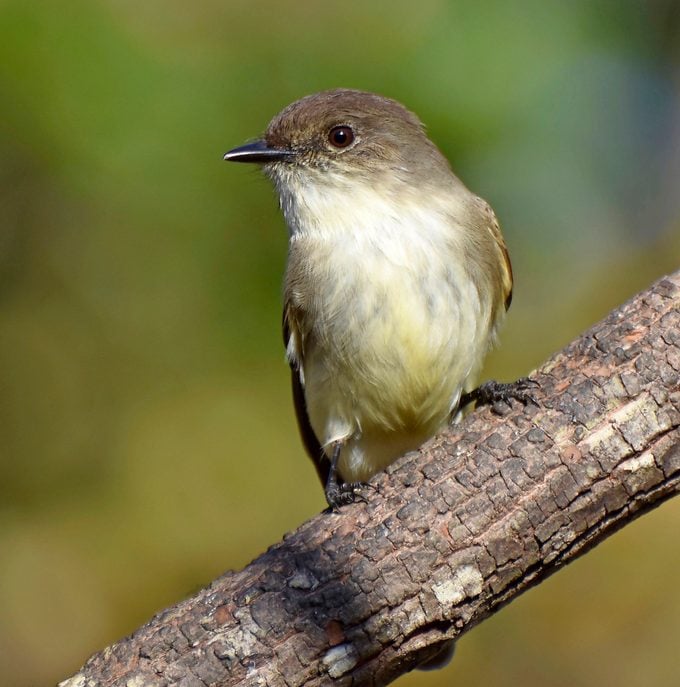
Eastern phoebes made history in 1804 when John James Audubon tied silver thread on the legs of nestlings to track their migration. This was the first North American experiment in bird banding. The next year he found two of his marked birds nesting nearby.
What Does an Eastern Phoebe Eat?
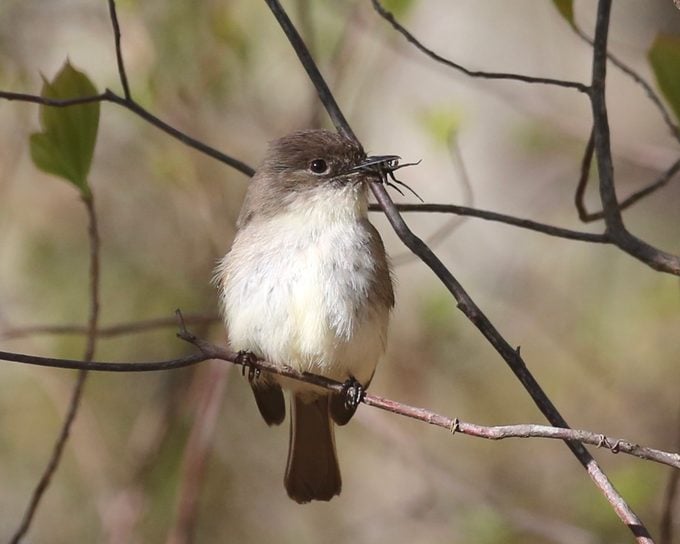
These members of the flycatcher family “eat mostly aerial insects,” says conservation scientist Desiree L. Narango. The eastern phoebe takes short flights from a favorite perch and snatches a mosquito or fly midair.
In winter, these birds survive by eating berries. To attract them, grow native plants to attract bugs and berry bushes.
Eastern Phoebe Call and Song
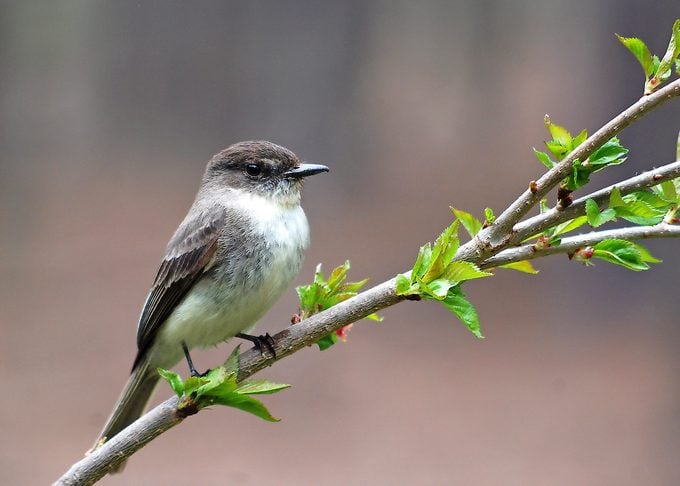
The male calls its name in rapid succession, “fee-bee, fee-bee, fee-bee.” Also listen for a clear, whistled “weew” or “tiboo.”
“Nothing ushers in spring quite like the eastern phoebe. Though not as melodious as some of our other native songbirds, the raspy, repetitive, two-note fee-bee call is music to my ears,” says field editor Tami Gingrich of Middlefield, Ohio.
Listen to the eastern phoebe’s song.
Bird songs provided by the Cornell Lab of Ornithology.
Range Map and Habitat

These birds are among the earliest migrants to return to their breeding grounds, so many birders look forward to seeing them in early spring. They also leave later in fall than other flycatchers. Look for them near water, particularly woods with streams, and farmyards and country roads with bridges crossing streams.
While most insect-eating flycatchers migrate far south to the tropics in winter, many eastern phoebes stay in the southeastern U.S., feeding on berries in the coldest weather.
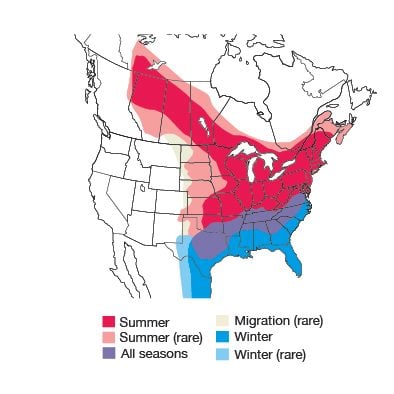
Range maps provided by Kaufman Field Guides, the official field guide of Birds & Blooms.
Next, learn how to identify a red-eyed vireo.
About the Experts
Desiree L. Narango is a conservation scientist with the Vermont Center for Ecostudies. Desiree was formerly a postdoctoral researcher at the University of Massachusetts, Amherst.
Kenn and Kimberly Kaufman are the official bird experts for Birds & Blooms. They are the creators of the Kaufman Field Guide series and they lead birding trips all over the world.





















